Habitantes del parque. Park inhabitants. [Esp/Eng]
Español
Hola amigos, hoy he ido a El parque Grande José Antonio Labordeta, el parque mas conocido de la ciudad a fotografiar a sus habitantes para mostrarlos a la gran comunidad Feathered Friends.
Espero que os gusten las fotografias.
Pato doméstico (Anas platyrhynchos domesticus)
Este pequeñín es una subespecie del ánade real, suelen vivir de 9 a 12 años, suelen domesticarse bastante bien, se llevan bien con los visitantes, este venia a pedirme comida, es un encanto.
Paloma torcaz (Columba palumbus)
En la primera imagen parecía que estaba posando para mi cámara, luego me di cuenta que lo que quería era beber agua.
Antes en mi ciudad, Zaragoza, estaban en la afueras en los pinares, pero ahora ya se pueden ver por todas partes.
Vuelan bastante bien para poder evadir de los depredadores realizando virajes rápidos.
Grajilla occidental (Corvus monedula)
Parece que se esta preparando un nido muy mullido con pelusas de los arboles.
Suelen ir en pareja, son muy gregarias y viven en comunidad con mas miembros, las bandadas invernales llegan a reunir cientos de miembros.
Lavandera blanca (Motacilla alba)
Estas se mueven a gran velocidad correteando por el suelo y volando de manera muy nerviosa.
Suelen estar cerca de carrizales alimentándose de insectos.
Estornino Negro (Sturmus unicolor)
Cerca de mi casa siempre hay un montón posados en las antenas de las casas, por las mañanas salen de los arboles y se ponen al sol un rato, luego se van a comer pequeños invertebrados y al final de la noche vuelven a los arboles, es impresionante el ruido que hacen las bandadas.
Zorzal común (Turdus philomelos)
Estos son de mis favoritos, se desplazan a salto como si fueran un gorrión pero mas grande, es curioso verlos comiendo caracoles, rompen la cascara golpeándola contra el suelo duro o un piedra, tambien comen invertebrados y frutos.
Este lo dejo para que la comunidad de Feathered Friends me diga que es en los comentarios.
Podría ser un Papamoscas cerrojillo (Ficedula hypoleuca) pero no lo se seguro.
Este es un cartel informativo del parque, es una pena que estuviera tan sucio.
Fotografías por @germanaure
Textos:
@germanaure
Camara:
Nikon Coolpix B700
Camina, fotografía, siente y sobre todo disfruta.
English
Hello friends, today I went to Parque Grande José Antonio Labordeta, the most famous park in the city, to photograph its inhabitants and show them to the larger Feathered Friends community.
I hope you like the photos.
Domestic Duck (Anas platyrhynchos domesticus)
This little guy is a subspecies of the mallard duck. They typically live 9 to 12 years, are fairly tame, and get along well. When visitors came to ask me for food, it's a real charm.
Wood Pigeon (Columba palumbus)
In the first image, it looked like it was posing for my camera, but then I realized it wanted to drink water.
Before, in my city, Zaragoza, they were found on the outskirts of the city in the pine forests, but now they can be seen everywhere.
They fly quite well, allowing them to evade predators by making quick turns.
Western Jackdaw (Corvus monedula)
It looks like it's making a very fluffy nest out of tree fluff. They usually grow in pairs, are highly gregarious, and live in communities with several members. Winter flocks can number hundreds.
White Wagtail (Motacilla alba)
They move at great speed, skittering along the ground and flying very nervously.
They are usually found near reed beds, feeding on insects.
Black Starling (Sturmus unicolor)
Near my house, there are always a lot of them perched on the antennas of houses. In the mornings, they come out of the trees and bask in the sun for a while. Then they go to eat small invertebrates, and at the end of the night, they return to the trees. The noise the flocks make is impressive.
Song Thrush (Turdus philomelos)
These are one of my favorites. They hop around like a sparrow, but bigger. It's interesting to see them eating snails. They break the shell by hitting it against the hard ground or a stone. They also eat invertebrates and fruits.
I'll leave this one for the Feathered Friends community to tell me what it is in the comments.
It could be a Pied Flycatcher (Ficedula hypoleuca), but I'm not sure.
This is an informational sign for the park. It's a shame it was so dirty.
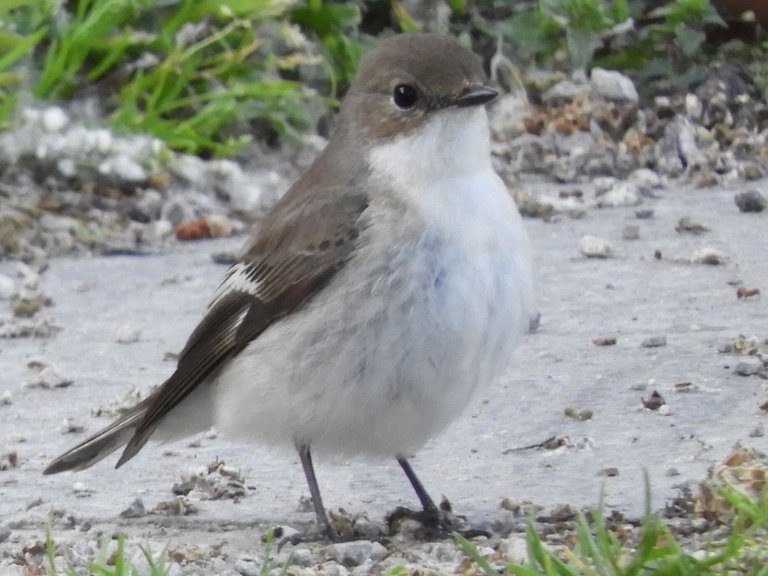

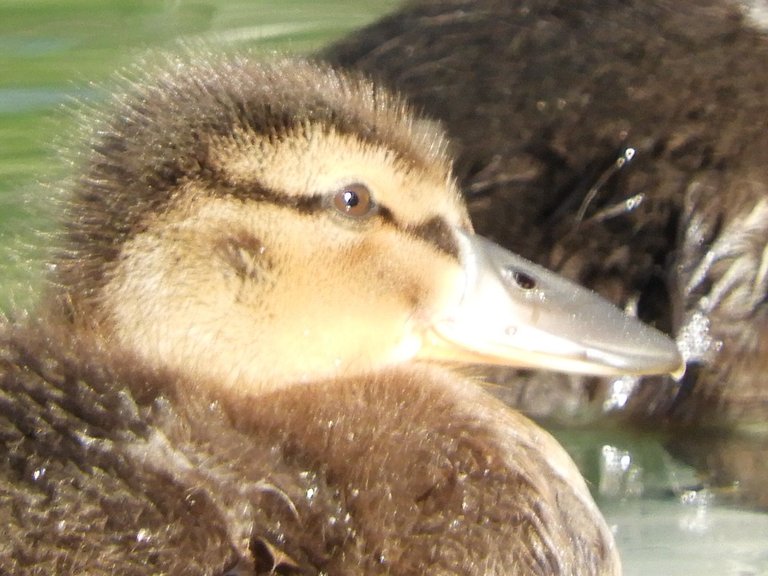
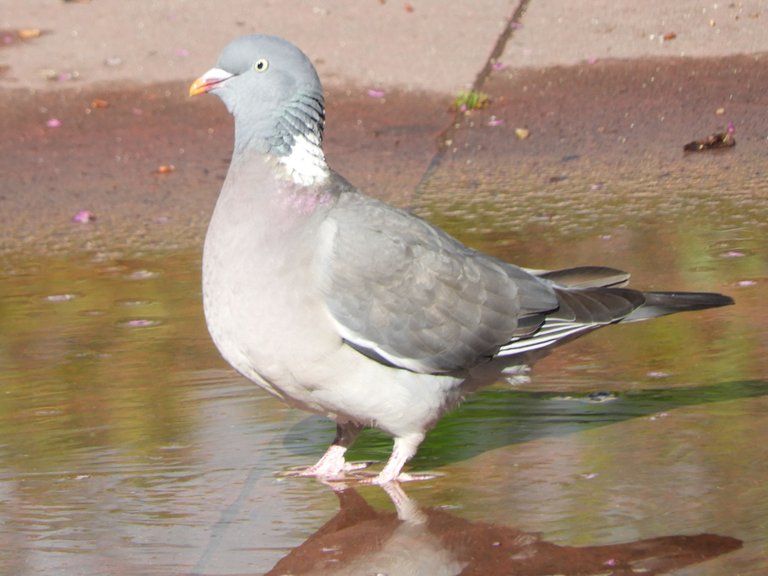
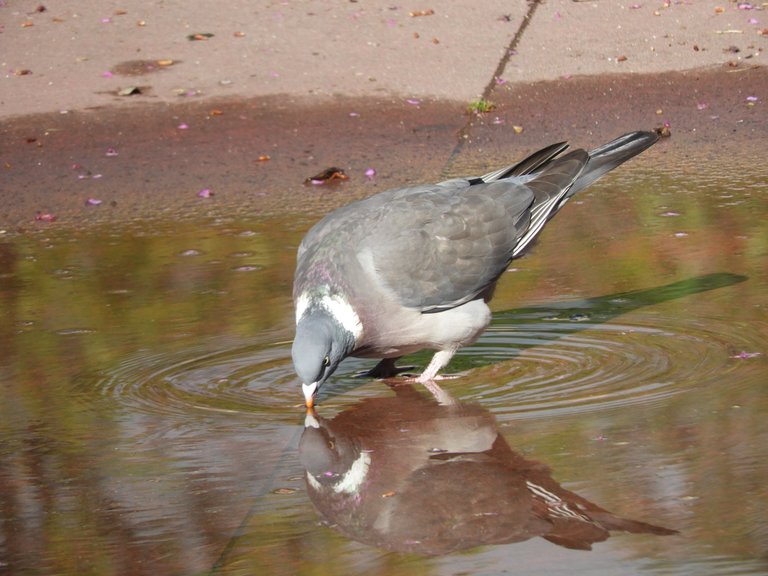

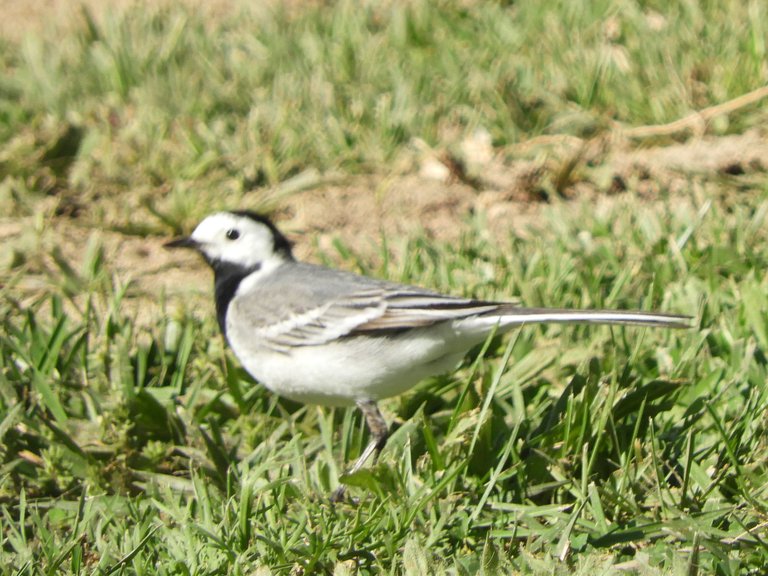
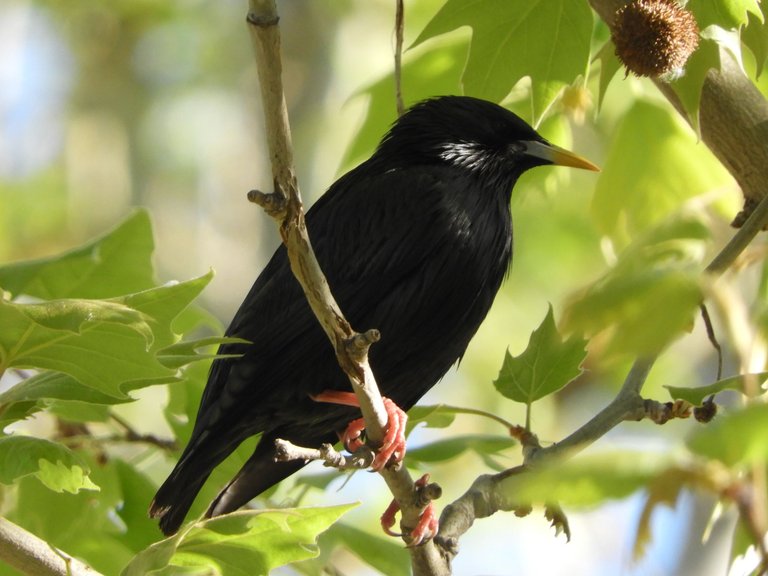
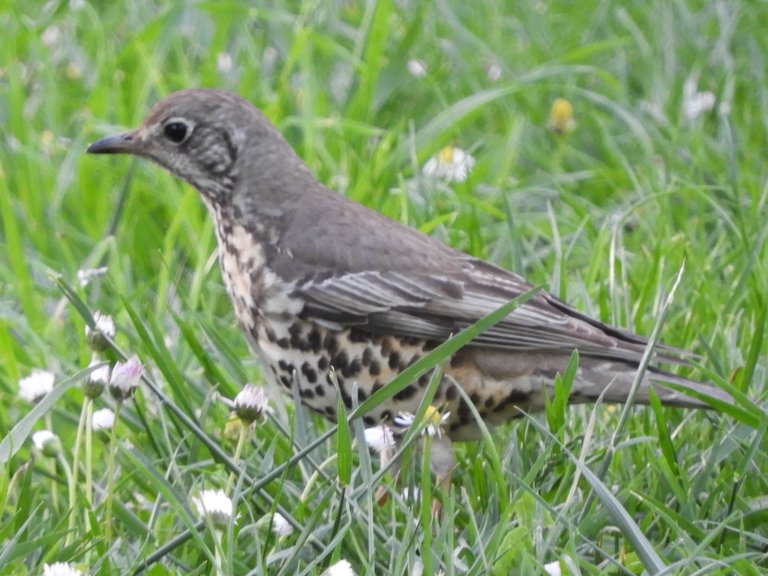
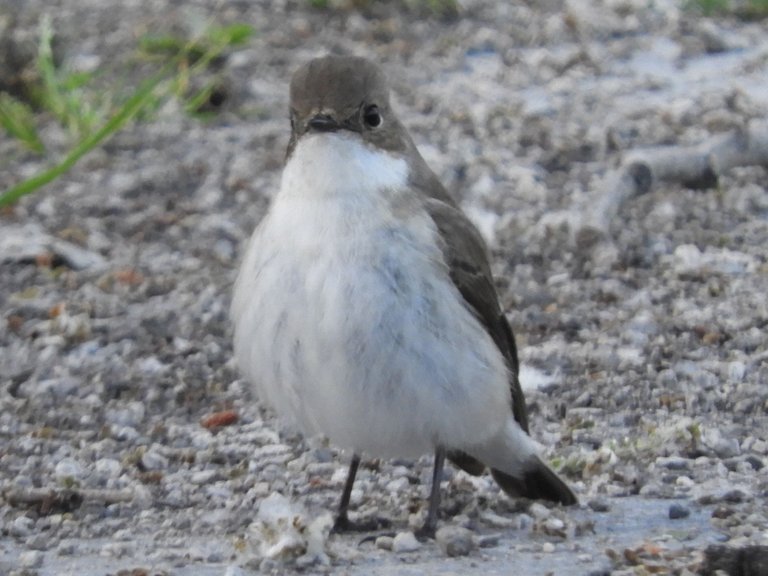
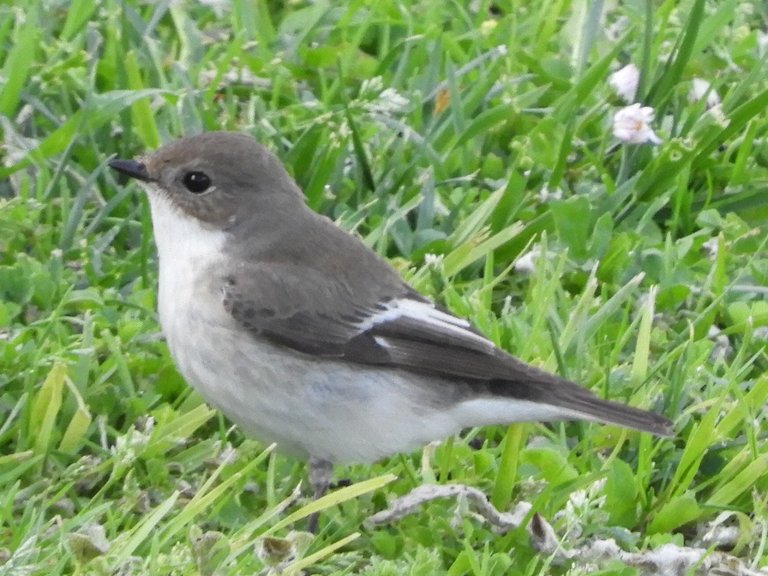

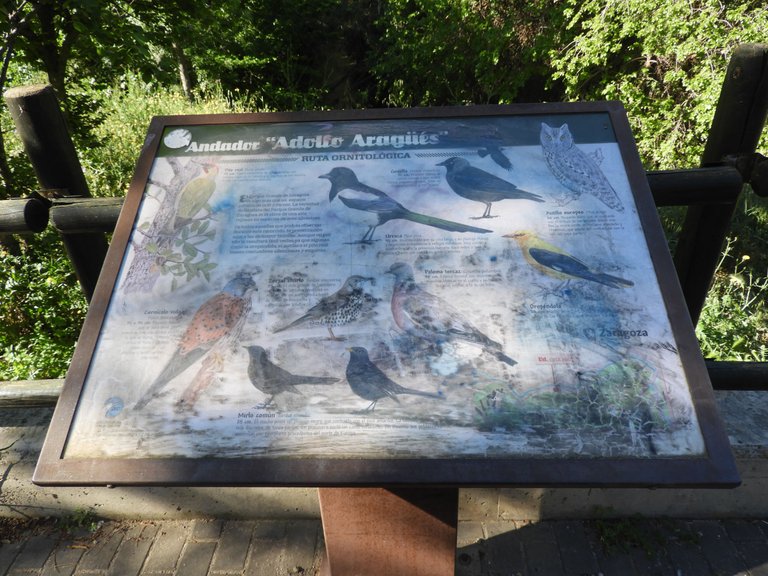
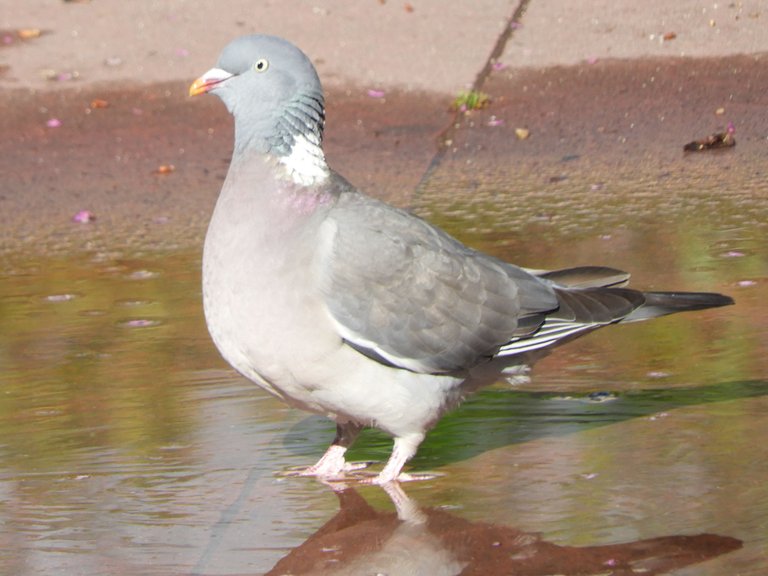
Me encantan todas las fotos, pero estoy totalmente enamorada del pato domestico y el estornino negro :D
La verdad que son preciosos.